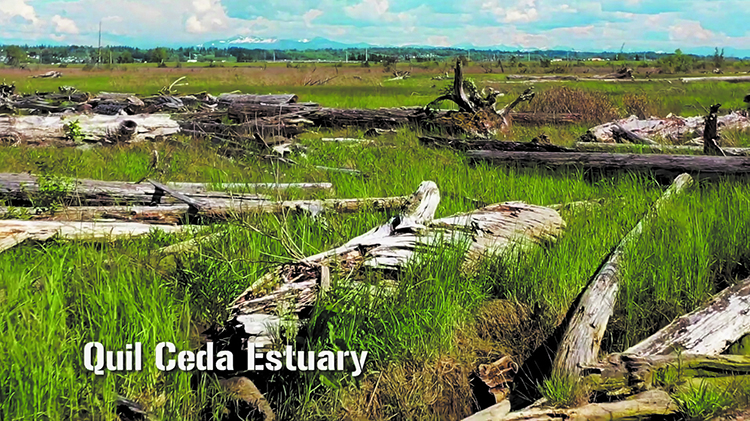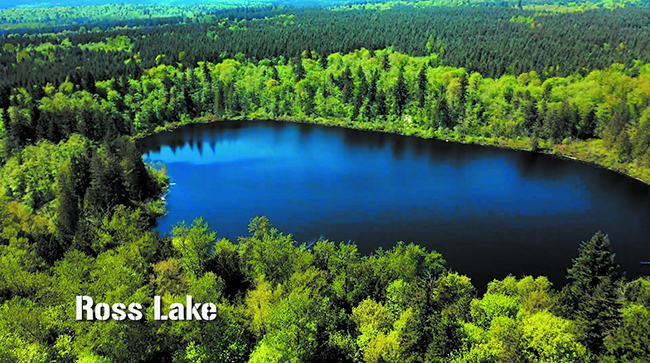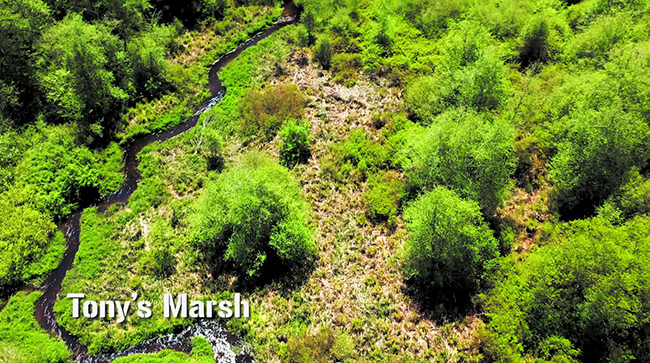
By Micheal Rios, Tulalip News
May is American Wetlands Month. A time to celebrate one of nature’s most productive ecosystems. Join us as we take this opportunity to give our readers a gentle reminder to take time to recognize the wonderful way wetlands enrich the local environment and our Tulalip way of life.
There are many types of wetlands, including coastal wetlands, potholes, vernal pools, bogs, and swamps, and each provide unique ecosystem benefits. Unfortunately, wetlands face numerous challenges, such as global warming and rising sea levels, as well as drainage, fill and excavation. These factors and more drive the critical need for wetland conservation and restoration.
In fact, wetlands are among the most valuable but least understood of all natural resources. They provide rich habitat for wildlife. They are place in which many animals and birds build nests and raise their young. Migrating birds stop over in wetlands to rest and to feed. We unknowingly celebrate wetlands each May when they are teeming with new animal and plant life.
Wetlands benefit our communities as well. They replenish and clean water supplies and reduce flood risks, provide recreational opportunities and aesthetic benefits. They serve as sites for scientific research and education, and provide massive benefits to our beloved Salmon runs.

Unfortunately, wetlands have been misunderstood for many years, often viewed as wastelands to be drained and converted to other uses. But if wetlands disappear, water will not be as clean, fish and bird populations will suffer, and the frequency and severity of floods will increase. In recent years, there’s been a push by the scientific community and environmentalists to get mainstream America to recognize the value of wetlands.
Fortunately, for the Tulalip community, we have a dedicated Natural Resources team working diligently to protect and preserve our wetlands for future generations through various programs. One such member of that team is wetland biologist Michelle Bahnick. She recently spoke with Tulalip Media & Marketing’s resident documentarian, Justin Salva, at length about the importance of celebrating our Tulalip wetlands.
“We have over 500 wetlands on the Reservation, alone, and they make up approximately 20% of the Reservation,” explained Michelle. “We have wetlands connected to rivers, lakes, estuaries along the shorelines. We have depressional wetlands that just kind of may appear in your backyards. We have forested wetlands. We have wetlands that are predominately shrubs. We have ones that are basically grass fields that get wet.
“Wetlands are important for a bunch of different reasons. One easy one is that they recharge about 8% of the wells that are on the Reservation. Additionally, they provide habitat for anything from butterflies and birds to salmon and all sorts of insects. They also clean water by acting as sponges during storms and flood events. They help capture a bunch of water, hold onto it for a while, and then slowly releases the water back into the ground table or into streams and rivers. They also serve to help the water nice and cool during the summer for the salmon, as well as keeping river and stream flows consistent for salmon, too.

“Historically, in Washington State alone, over 50% of the wetlands have been diked or drained for the purpose of letting people use those areas for agriculture, for production and for developing housing. Luckily on the Reservation we’ve actually done a really good job, and since 1974 we’ve only lost about 2% of the wetlands. But we are still losing wetland area, and every time we lose wetland area we’re losing the flood protection, we’re losing water quality, and we’re losing habitat.
“Hopefully, in the future, we’ll have opportunities to create more wetlands or find ways to expand and enhance the existing wetlands that are here. Having a month dedicated to protecting wetlands is a good way to show that they’re beautiful areas and they are worth protecting.”
For more information on how you can help protect America’s wetlands, please visit https://www.epa.gov/wetlands Or if you’re interested in learning more about how our local Natural Resources team is working every day to sustain our traditions and culture, please visit their website: https://nr.tulaliptribes.com